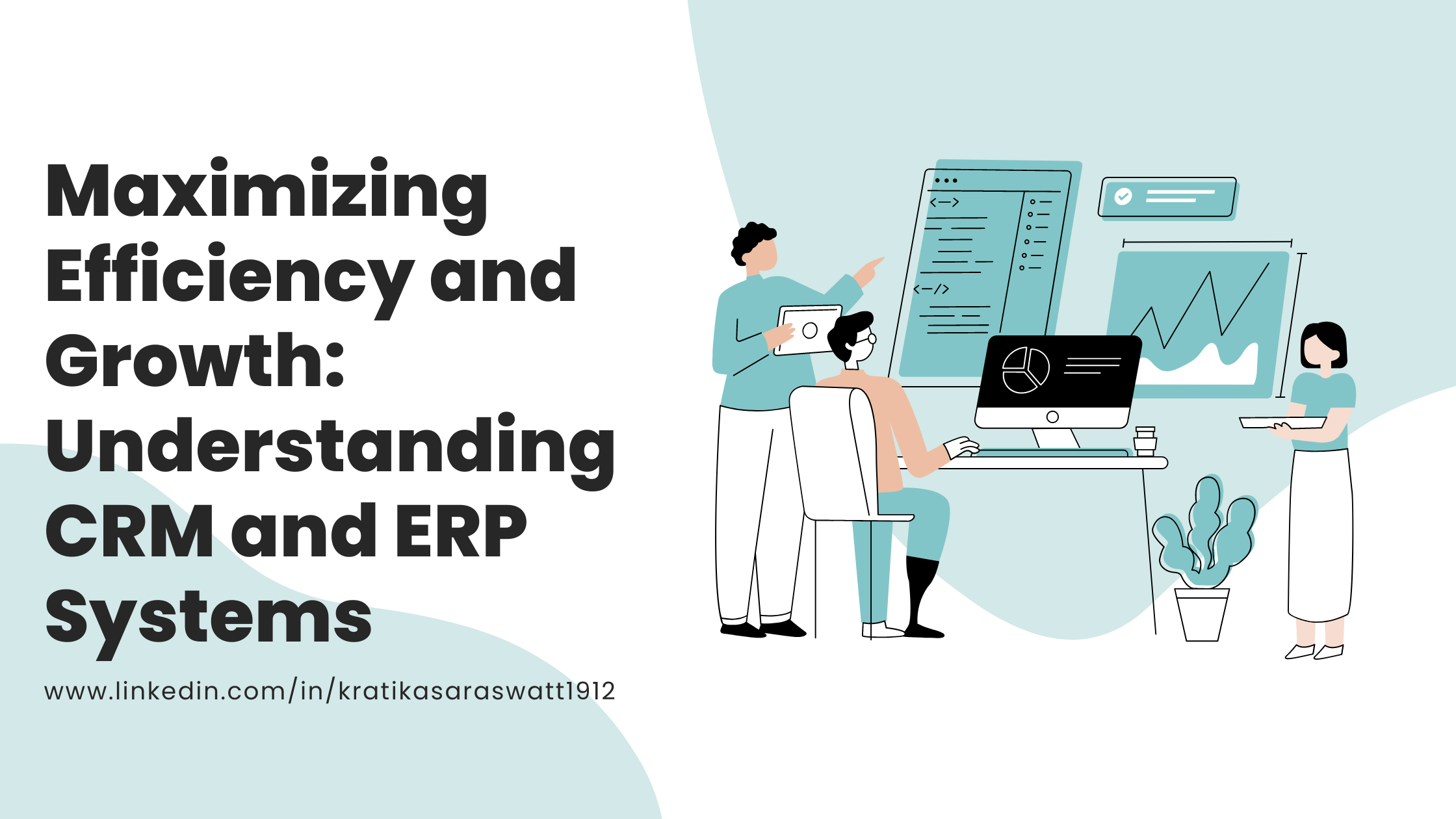Maximizing Efficiency and Growth: Understanding CRM and ERP Systems.
 Kratika Saraswat
Kratika Saraswat
In today’s rapidly evolving business landscape, staying competitive requires more than just a quality product or service. Companies must also be adept at managing their internal processes, customer relationships, and overall operations. This is where Customer Relationship Management (CRM) and Enterprise Resource Planning (ERP) systems come into play. In this blog, we will delve into the significance of CRM and ERP systems, their functionalities, and the benefits they bring to businesses.
Understanding CRM (Customer Relationship Management):
CRM is a comprehensive strategy and technology designed to manage a company’s interactions with current and potential customers. The primary goal of CRM is to enhance customer satisfaction and streamline business processes. CRM systems enable businesses to collect, organize, and analyze customer data, providing valuable insights that can be used to improve customer relationships and boost sales.
Key Features of CRM Systems:
Customer Data Management: CRM systems centralize customer information, making it easily accessible to all relevant departments. This includes contact details, purchase history, preferences, and customer interactions.
Sales Automation: CRM automates sales processes, from lead generation to deal closure. It helps sales teams manage leads, track communication, and forecast sales more accurately.
Marketing Automation: CRM systems assist in creating targeted marketing campaigns, tracking campaign performance, and analyzing customer responses. This helps businesses tailor their marketing efforts for better results.
Customer Service Enhancement: With CRM, customer service teams can respond more efficiently to customer inquiries, provide personalized support, and address issues promptly, ultimately improving customer satisfaction.
Understanding ERP (Enterprise Resource Planning):
ERP systems integrate various business processes and functions across an organization into a unified system. The goal is to streamline operations, enhance collaboration, and provide real-time visibility into key performance indicators. ERP goes beyond customer interactions, covering areas such as finance, human resources, supply chain, and more.
Key Modules of ERP Systems:
Finance and Accounting: ERP centralizes financial data, automates accounting processes, and provides accurate financial reporting.
Human Resources: ERP manages HR processes, including payroll, recruitment, employee onboarding, and performance management.
Supply Chain Management: ERP optimizes the supply chain by monitoring inventory levels, managing procurement, and ensuring efficient production and distribution.
Manufacturing: ERP systems help improve production planning, resource allocation, and overall manufacturing efficiency.
Benefits of CRM and ERP Integration:
Improved Collaboration: Integrating CRM and ERP systems fosters better communication and collaboration between different departments, leading to a more cohesive and efficient organization.
Data Accuracy and Consistency: A unified system ensures that data is consistent across all departments, reducing the risk of errors and improving the accuracy of decision-making.
Enhanced Customer Experience: By combining CRM and ERP, businesses can deliver a seamless customer experience, from initial contact through to post-sales support.
Operational Efficiency: The integration of ERP and CRM eliminates silos, streamlining processes and increasing overall operational efficiency.
In the dynamic and competitive business environment, implementing CRM and ERP systems is no longer a luxury but a necessity. These systems empower businesses to stay agile, make data-driven decisions, and build lasting relationships with customers. As technology continues to evolve, the integration of CRM and ERP will play an increasingly vital role in driving growth and ensuring long-term success for businesses across various industries.
Subscribe to my newsletter
Read articles from Kratika Saraswat directly inside your inbox. Subscribe to the newsletter, and don't miss out.
Written by
